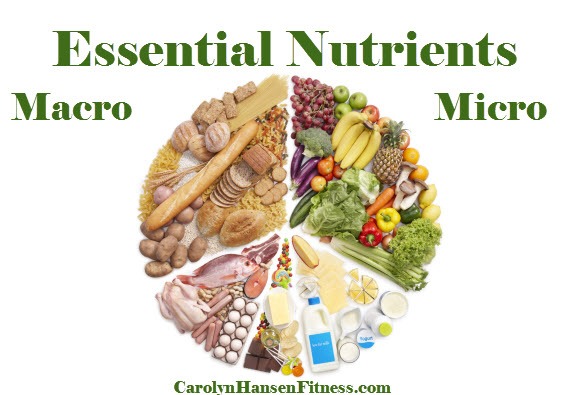Without a doubt, the most incredible machine ever created is the human body.
Among all the amazing talents it displays, is the ability to break down the foods we eat into macro and micro nutrients so they can be reassembled and utilized.
What exactly is a nutrient? Nutrients are chemical substances that come from the food you eat. They provide your body with needed energy for metabolic processes and to maintain a constant internal environment.
Every time your heart beats, every time you breathe, your mental activity and physical movements all get their energy from the nutrients you provide from the foods you eat.
Essential nutrients are exactly what the name implies. They are vital to your body for normal growth, maintenance and development. Nutrients can be divided into 6 classifications, proteins, fats, carbohydrates, vitamins and minerals. Water is also classified as a nutrient.
Of the six essential nutrients required to maintain and develop a healthy body, 3 of them are considered macro-nutrients.
Macro-nutrients
Macro-nutrients include carbohydrates, fats, fiber and proteins. They are the caloric component of foods and are responsible for providing every cell and organ in the body with energy. A lack of these nutrients can stress the organs and result in fatigue. Excess consumption of macro-nutrients can lead to weight gain and diabetes.
Every cell in the body contains the macro-nutrient protein. Meats, poultry, fish, dairy, veggies, nuts, seeds and beans are great choices for protein as well as tofu, a soybean-based product often eaten by those who choose not to eat meat. Other macro-nutrients are the metals sodium, magnesium, potassium, calcium, manganese, iron, copper, zinc and molybdenum.
Micro-nutrients
Micro-nutrients are the vitamins, minerals, trace elements, phytochemicals, and antioxidants that are essential for good health. They also include iron, cobalt, copper, chromium, iodine, manganese, selenium, zinc and other minerals. They do not contain calories like macro-nutrients provide. However, their high antioxidant levels protect the body against many diseases associated with aging and promote longevity with the ability to eliminate damaging toxins and neutralize free radicals. Chronic fatigue, diminished mental health and vision problems are all the result of a lack of micro-nutrients.
Just as then name implies, macro nutrients are needed in large “macro” amounts while micro nutrients are only required in “micro” amounts.
According to the CDC – the Centers for Disease Control, a balanced diet is one that contain carbohydrates, proteins, fats and essential vitamins and minerals and eating a balanced diet from the six major food groups will provide most people with the micro and macro nutrients their bodies require.
To summarize, macro-nutrients such as proteins, carbohydrates and fats provide calories for energy and micro-nutrients – those that include vitamins and minerals are necessary for maintaining good health.
The quantity and quality of these nutrients vary greatly, depending on not only what types of food you eat, but also the quality of those foods. In other words, food matters, or rather the quality of your food matters.
The key is to choose a variety of foods that are natures finest – whole brightly colored fruits and veggies that grow locally are best. They don’t have to travel as far before reaching you and they are much kinder to your wallet.
Even desserts and treats can be healthy and offer the essential nutrients your body operates on.
If you are looking for healthy raw, desserts, treats and snacks, pick up your personal copy of “Blended Bites” where even veggies play a starring role.
For more tools and resources from Carolyn Hansen to assist you in attaining your health and fitness goals and achieving the success you desire in life, please visit:


